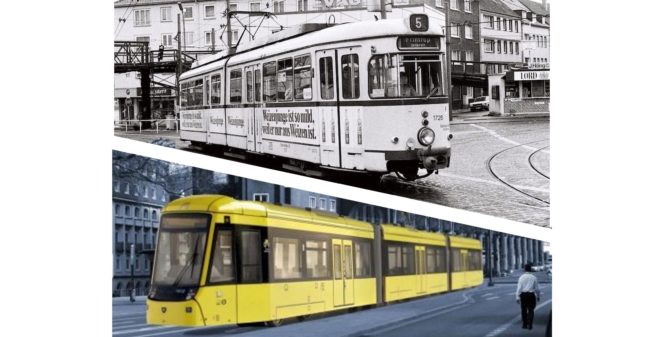
For decades, the following principle applied to public transport and rail transport planning, especially in the Ruhr area: the tram or light rail are to be put into the underground. The initial idea of this light metro concept was to improve public transport, but it was also the preparation of the Rhine-Ruhr-wide metro network, which had been planned since the 1950s and 1960s. Due to various socio-economic factors, the metro network has never been fully accomplished. What is left is a patchwork of different low-floor and high-floor light-rail and tram systems, some meter and normal gauge, between the cities of Dortmund, Düsseldorf and Cologne / Bonn.
While in many places the tram was converted to the tunnel operation or in some cases completely shut down, plenty of space for multi-lane roads was left at the surface. Whether the quality of life in the corresponding cities has improved as is a polemical question and is certainly depends on each city.
The transport policy of Essen, with its 582,000 inhabitants in the heart of the Ruhr valley, has decided a milestone in public transport planning in May 2020: the tram will have its comeback to the surface. Called “Citybahn” (city tram), the city council decided to put the reintroduction of the tram in the center of Essen on the agenda. The project that has been planned for years and will now be implemented. The first trams are scheduled to run in 2025. Further details below.

Düwag bi-directional GT6 tram 1727 in 1977 on line 5 (Frintrop – Rellinghausen) seen at Porscheplatz I © Christian Marquordt 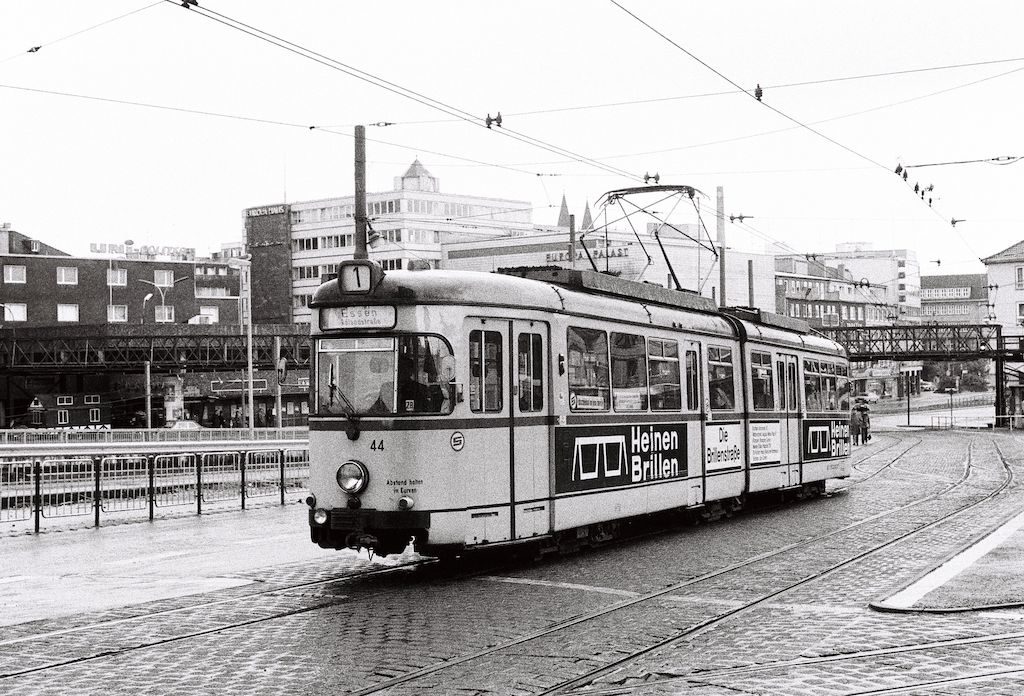
GT6 tram car 44 from Bochum seen in 1977 at Porscheplatz I © Christian Marquordt 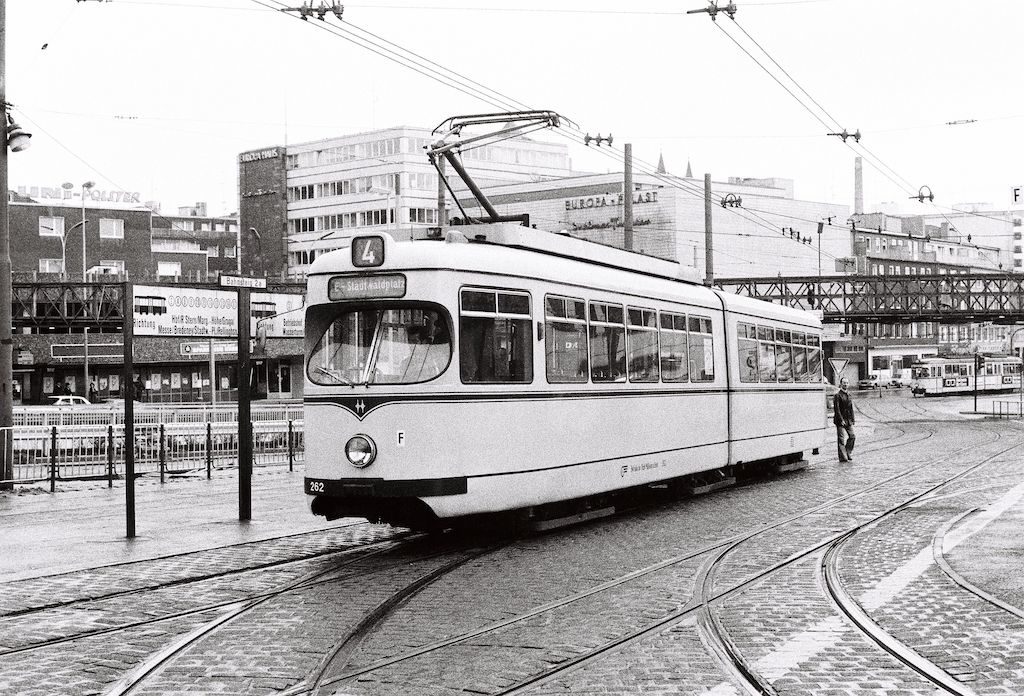
Mülheim GT6 tram car in 1977 at Porscheplatz I © Christian Marquordt 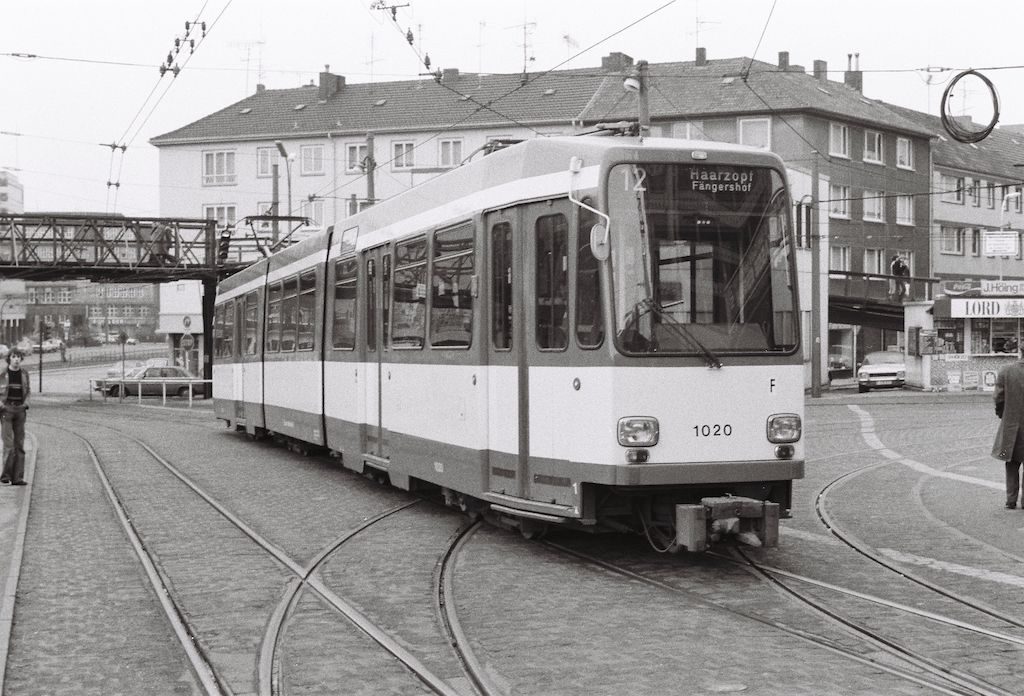
M8S tram car 1020 seen in 1977 on line 12 (Haarzopf – Bahnhof Kray-Nord) at Porscheplatz I © Christian Marquordt
Essen’s tram history
But lets first have a look back: Essen started relatively early with the construction of tram tunnels in the city center to make it “tram-free” and not to hinder private transport. The first step was a 600 m long tram tunnel section in the course of Huyssenallee between the main train station and Bredeneyer Straße. On 5 October 1967, the first underground tram line was opened with the Saalbau tunnel station. The connection to the surface was ensured by means of provisional ramps. From 1971 the construction of the tunnel routes in the city center and at the main station was launched. The underground standard gauge line of the U18 and the meter-gauge tunnel line on the section Saalbau – Porscheplatz went into operation on May 28, 1977. On the same day, the above-ground lines Hauptbahnhof – Beiseweg as well as the 5.5 km long line Beiseweg – Holsterhauser Platz – Margarethenhöhe were closed.
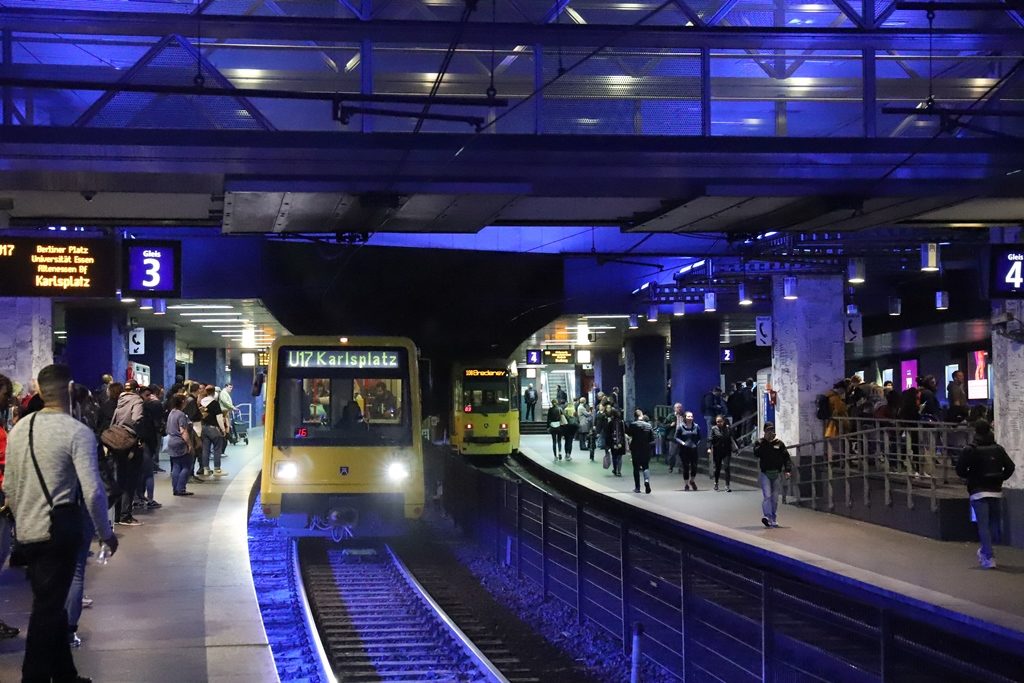
The following tunnel sections were opened subsequently in the following years and decades:
- 1981: Bismarckplatz – Planckstraße (standard gauge)
- 1981: Hirschlandplatz – Universität Essen (standard gauge)
- 1985: Porscheplatz – Viehofer Platz (meter gauge)
- 1986: Saalbau – Florastraße (meter and standard gauge)
- 1991: Porscheplatz – Krupp Hauptverwaltung (meter gauge)
- 1998: Universität Essen – Altenessen Bf (standard gauge)
- 2001: Altenessen Bf – II. Schichtstraße (standard gauge)
Since then, the Essen subway network consists of a kind of triangle with three transfer nodes at Essen Hbf, Berliner Platz and Porscheplatz. Porscheplatz and the city center have essentially been free of trams since 1991.
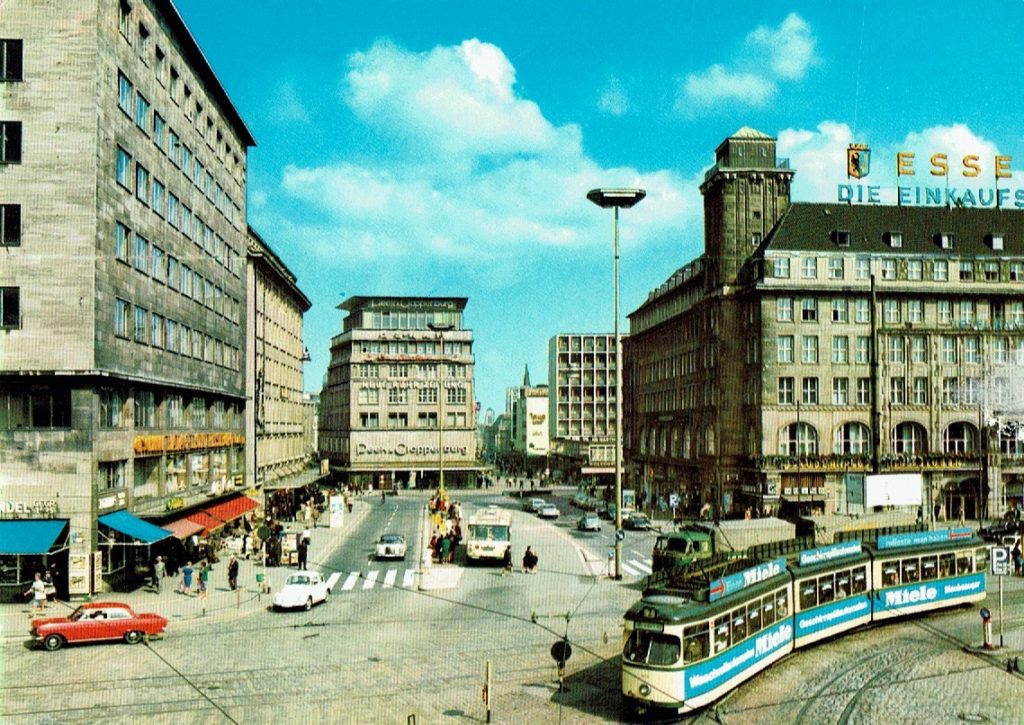
The tram disappeared from Essen’s central station square in 1977: GT8 tram with a Büssing Senator bus. Trams will come back here in 2025 I Coll. UTM 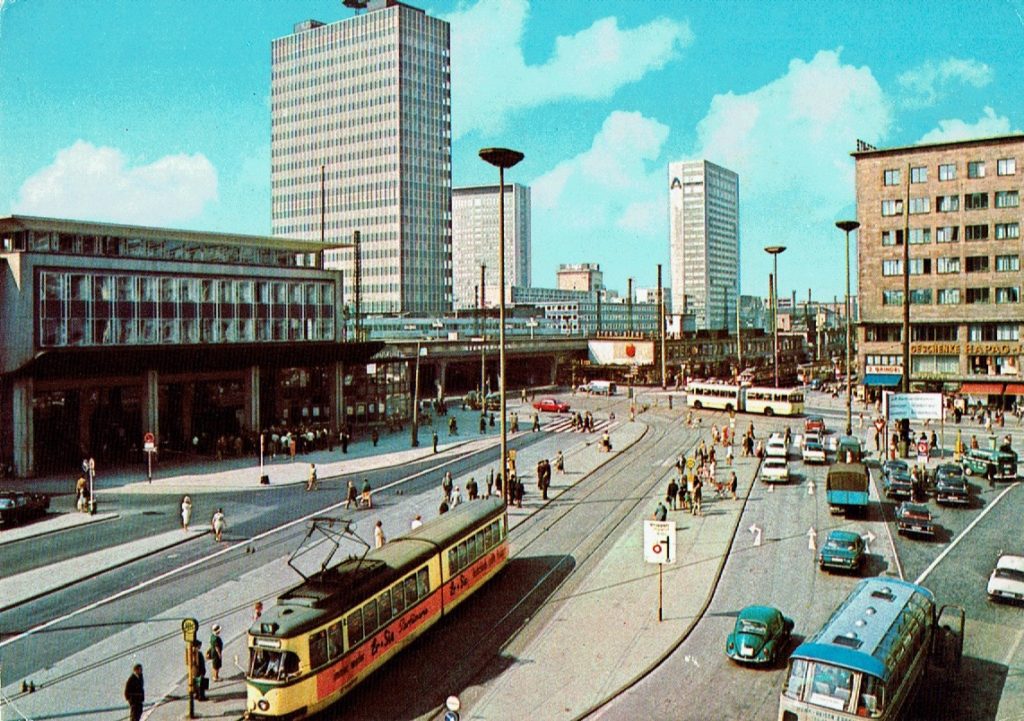
Historical postcard of Essen’s central station square with Bochum unidirectional GT6 on line 1 which connected Essen to Gelsenkirchen Hbf (via GE-Horst), to the bottom right a Setra 10 Series, built at the end of the 1960’s I Coll. UTM 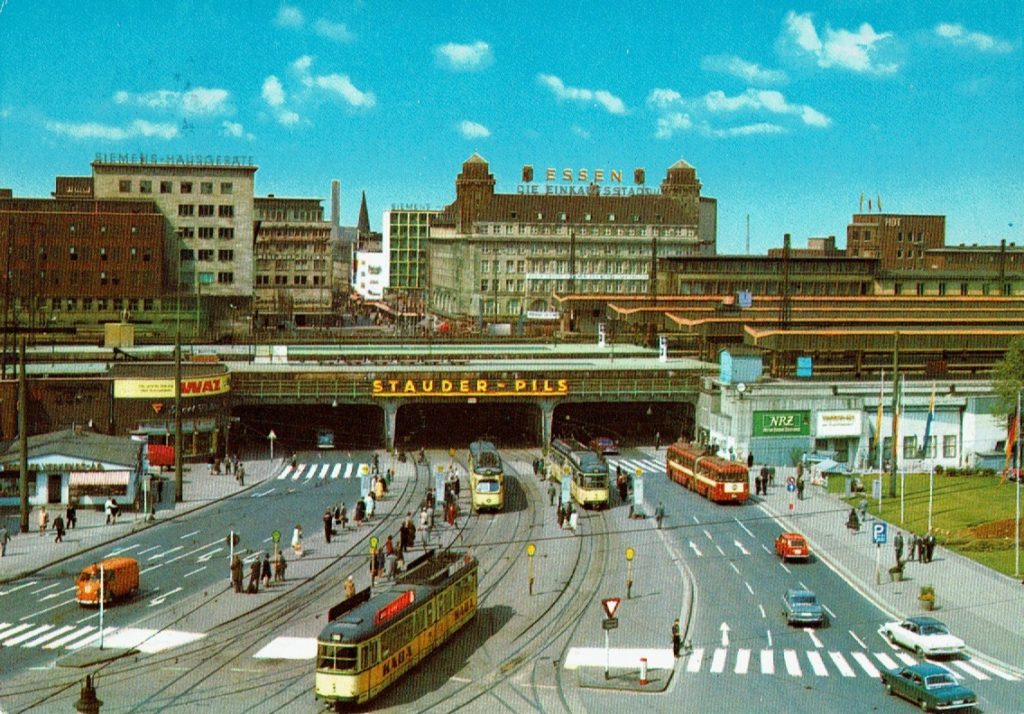
Tram stop “Freiheit” behind Essen central station with GT6 tram cars and a Henschel HS 160 USL-G-U bus of Deutsche Bundesbahn I Coll. UTM 
Essen’s central station square with GT6 and Henschel HS 160 USL-G bus I Coll UTM
The new citytram
The city tram, branded “Citybahn”, will return to the city center in 2025. It conquers back the forecourt of the train station, joins the historical building ensemble of Handelshof, Hauptpost, Haus der Technik and Eickhaus in the mere city centre. The tram’s comeback will make Essen’s city centre more attractive. On 28 May 2020, the plans for the construction of the first section of the city tram were presented to the Essen Construction and Transport Committee. Detailed planning will now start.

Trams disappeared here in 1977: Essen’s central station square seen in 1955 I Photo: Fotoarchiv Ruhr Museum 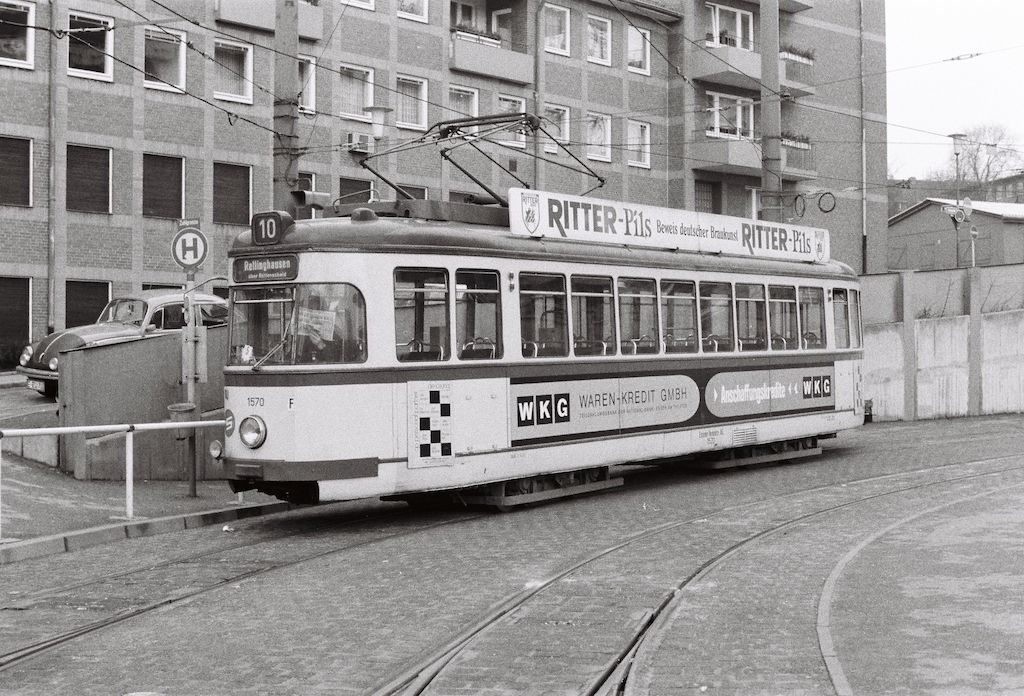
Düwag 4-axle tram car 1570 seen in 1977 at Porscheplatz I © Christian Marquordt 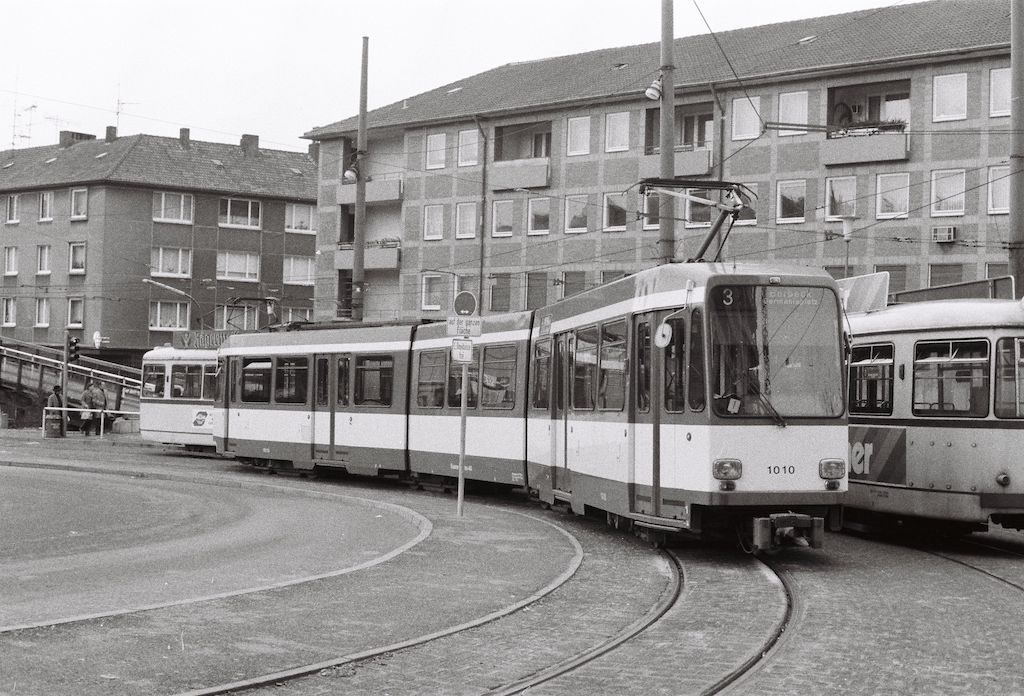
There used to be a lot of tram traffic at the surface station of Porscheplatz I © Christian Marquordt 
For quite some time, Essen used to operate surface trams and underground trams and light rail I © Christian Marquordt
The Citybahn is planned to be built on an approximately five-kilometer-long surface tram route between the “Bergmühle” and “Stadtmitte tram depot”. The route of the Citybahn thus links the new Essen 51. district with the city center and also creates a connection from west to east to the Essen-Steele district. Eight above-ground stops are planned, two further existing ones are being revised. Just like for urban development, the construction and construction of a new tram route is a major event for the planners and makers of the operator Ruhrbahn: Most recently, the Ruhrbahn was celebrating the new route on Berthold-Beitz-Boulevard which was opened six years ago. The first trams on line 109 started operating the 1.3-kilometer section in the Westviertel and in Holsterhausen in October 2014.
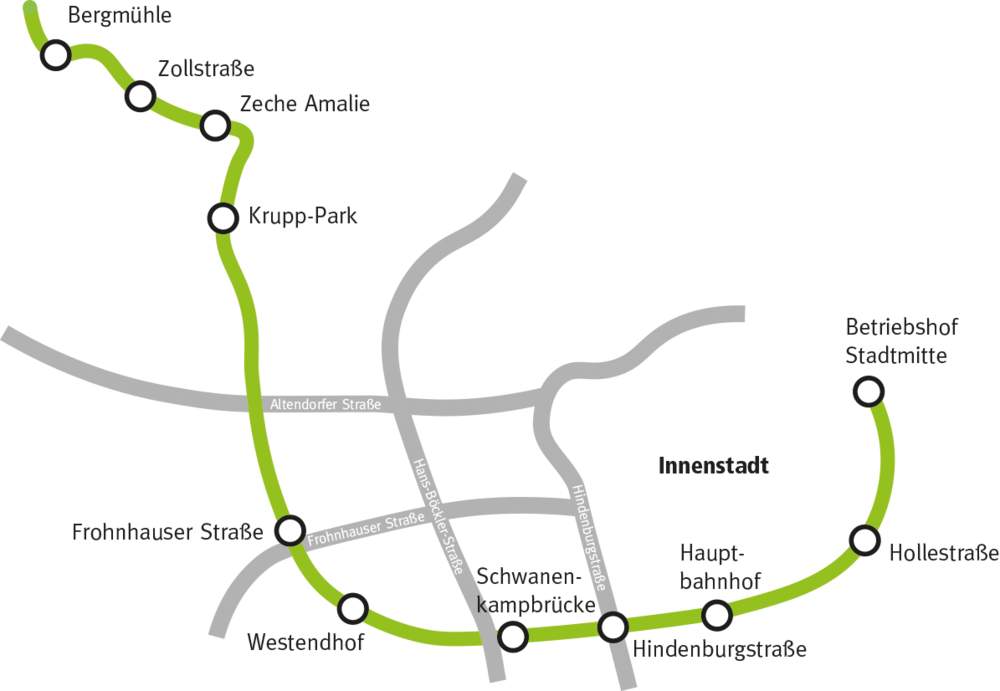
“With the construction of the tram tangent we succeed in closing an important gap in the city of Essen’s public transport network. In this way we are strengthening public transport as an attractive and environmentally friendly alternative to individual transport. The new city tram as an east-west route will not only connect the ‘Essen 51.’ quarter but also improves the direct line of the eastern parts of the city towards the city center. At the same time, we are winning new offers for our public transport”, said Essen’s Mayor Thomas Kufen.
Ruhrbahn Managing Director Uwe Bonan added: “The Citybahn will create a direct connection from Huttrop and the southeast quarter to Essen Central Station. Citizens and politicians have long waited for this. Today, this connection is only possible by changing trains.” In addition, the population of the metropolis in the heart of the Ruhr area is increasing steadily. However, the capacity in public transport is limited. “The Citybahn is a bypass solution for our tram network. Only with the city tram we will be able to serve the growing number of passengers that we expect for the next few years and fully utilize the capacities of the tunnel systems for underground transport,” said Michael Feller, Managing Director of the Ruhrbahn .
By 2035, the city of Essen wants to achieve a modal split of 25 percent each in the areas of public transport, cycling, pedestrian traffic and motorized private transport. The Citybahn is an important component for this – because it makes a significant contribution to the further development of public transport in Essen. Simone Raskob, Business Unit Director Environment, Transport and Sport of the City of Essen: “In order to achieve a modal split of 25 percent for public transport in Essen, we have to invest in the infrastructure and the offer. The city tram is an essential element to achieve this goal to be realized by 2035. “
The necessary planning approval and committee resolutions are to be ready by December 2022, so that construction can begin in 2023. The route is scheduled to go into operation when the timetable changes in May 2025.
The project cost
The total cost for the new line is estimated at around 89 million Euro. The federal and state governments want to support the city of Essen and the Ruhrbahn in building the project by providing funding.
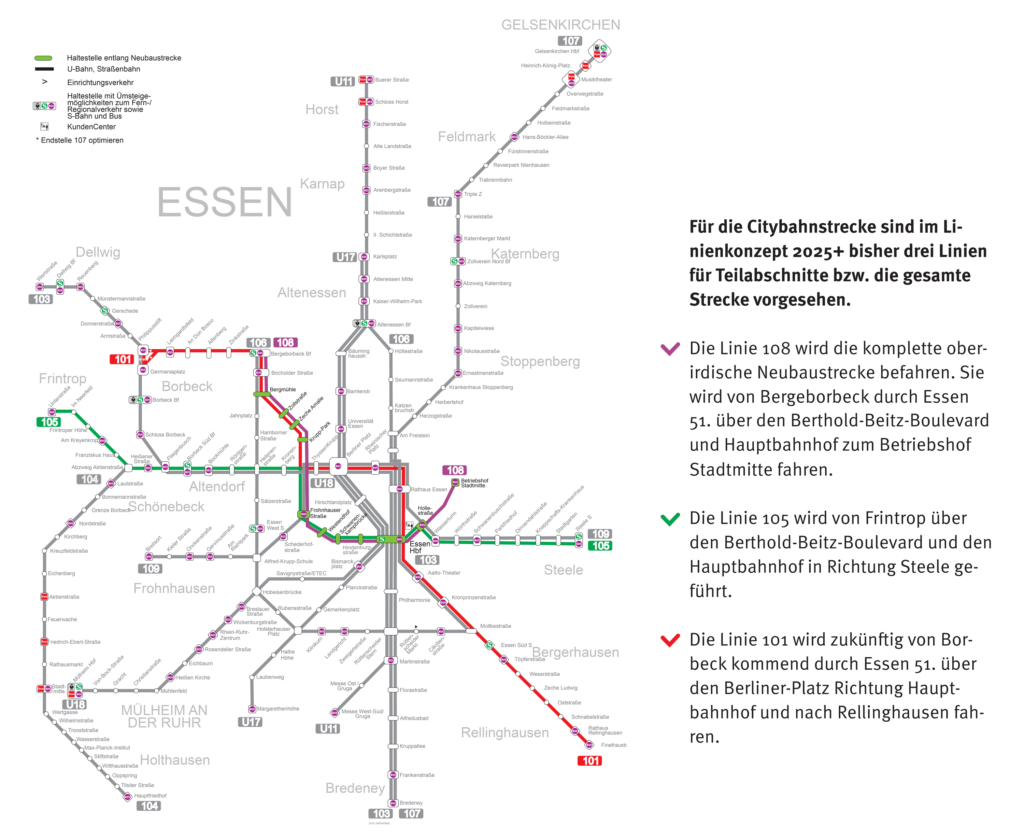
The operation on the new line
According to today’s plans, three tram lines will operate on the new route:
- In future, tram line 101 will run from Borbeck through the Essen 51 district, via Berliner Platz towards the main train station and to Rellinghausen.
- Tram line 105 will run from Frintrop via Berthold-Beitz-Boulevard to the main train station and further towards Steele.
- Tram line 108 will run from Bergeborbeck through the city district Essen 51 over the Berthold-Beitz-Boulevard and main station and will turn at the city center depot. The tram line 108 will thus pass the new alignment above ground.
Sources:
- City of Essen
- Ruhrbahn
- Book: Dieter Hölgte/ EK-Verlag “Straßen- und Stadtbahnen in Deutschland – Band 4: Ruhrgebiet”, Freiburg, 1994
- Book: Christoph Groneck/ Paul Lohkemper/ Robert Schwandl “Light Rail Networks in the Rhine-Ruhr Area – Vol. 1”, Berlin, 2005

